In preparation for Resurrection Day (Easter) on April 4, I began writing about the Seven Crucifixion Miracles that occurred while Jesus hung on the cross as reported in the Gospels.
Here is the list of Seven Crucifixion Miracles:
1. Thief on the cross saved.
2. Darkness covered the land for three hours from noon to three.
3. Jesus voluntarily gave up His spirit of His own accord.
4. Temple veil torn in two from top to bottom.
5. Earthquake and rocks split.
6. Tombs opened and dead raised to life.
7. Roman Centurion and his soldiers converted.
(Matthew 27:38-54; Luke 23:39-47;
Mark 15:33-39; John 19:28-30)
These seven miracles are worth examining in more detail, including their implementation, meaning, impact, and significance. Last week’s blog article, Crucifixion Miracle 1: Thief Saved, covered the first miracle. This article will discuss the Darkness Miracle. The other miracles will be covered in subsequent blog articles.
Crucifixion Miracle 2: Darkness Covered the Land for Three Hours
Matthew, Mark, and Luke all report a three-hour period of darkness from noon to three immediately preceding the death of Jesus on the cross. Luke explicitly says that the sun was obscured. (Matthew 27:45-46; Mark 15:33-34; Luke 23:44-45)
All three say the darkness was over the whole land for three hours from the sixth hour (noon) till the ninth hour (3 pm).
Imagine standing near the cross prior to Jesus’ death. Imagine feeling perplexed, confused, and terrified for three long hours of full darkness in the middle of the day when the sun normally shines hot and bright.
What would you think?
How would you feel?
What could it mean?
Why did it happen?
Would the sun ever appear again?
The darkness was a divine sign. It could not have been a coincidental natural occurrence. Natural events don’t measure up to the descriptions in the historical records. Storms can cause temporary darkness, but none of the Gospel writers mention a storm or even rain at the Crucifixion. And normal clouds cause dimming of sunlight but not complete darkness.
A solar eclipse could not have been the cause. Such events only last for a few minutes — less than eight minutes in any one place. Moreover, Jesus was crucified at Passover which always occurs at the full moon when the earth is between the sun and moon. For a solar eclipse, the moon must be between the sun and earth (new moon time).
Extra-biblical sources say it was like night with the stars visible. Therefore even extremely heavy cloud cover could not have been the cause of the darkness since stars were visible.
In addition to the historical testimony of Matthew, Mark, and Luke, there are numerous other historical references to this period of darkness. One such reference is the letter Pontius Pilate wrote to the Roman emperor Tiberius Caesar. Justin Martyr (~100–~165 AD) quotes from Pilate’s letter:
“And when he had been crucified, there was darkness over the whole earth, the sun having been completely hidden, and the heaven appearing dark though it was day, so that the stars appeared, but had at the same time their brightness darkened, as I suppose your reverence is not ignorant of, because in all the world they lighted lamps from the sixth hour until evening. And the moon, being like blood, did not shine the whole night, and yet she happened to be at the full. . . And there were seen in that terror dead men raised up, as the Jews that saw them said.”
(Report of Pilate, p. 229-230)
Phlegon of Tralles was a second-century Greek historian whose main work was the 16-volume Olympiads covering 776 BC to AD 137. Although these volumes are no longer extant, quotations from them by other historians still exist. At least seven ancient historians including Origen of Alexandria (182-254 AD), John Philoponus, Eusebius (~260–~339), and Julius Africanus (~160–~240) all quoted Phlegon’s account of events around the Crucifixion, and attested to its truth.
Phlegon wrote in his Olympiads, “In the fourth year of Olympiad 202, an eclipse of the sun happened, greater and more excellent than any that had happened before it; at the sixth hour, day turned into dark night, so that the stars were seen in the sky, and an earthquake in Bithynia toppled many buildings of the city of Nicaea.”
(From Phlegon of Tralles on the Passion)
Phlegon’s record of darkness and an earthquake agrees with the accounts of Matthew, Mark, and Luke. Phlegon adds the interesting detail that the darkness turned the day into night so that stars were visible. This rules out storms or even dust clouds as being the cause of the mid-day darkness.
Phlegon’s record also dates the Crucifixion to AD 33. The 202nd Olympiad ran from July AD 29 to June AD 33. Thus the fourth year of Olympiad 202 would be July AD 32 through June AD 33. Since Jesus was crucified in the spring on Passover, Phlegon’s account would place the Crucifixion in AD 33.
Tertullian (~155–~240 AD) of Carthage appealed to the evidence of Roman archives then in existence. In his Apologeticus of about AD 197 he presented a defense of the Christian faith, arguing that Christianity should be tolerated alongside the other religions of the Roman Empire. In Apologeticus he wrote this of Jesus:
“And further, on being crucified he displayed many signs peculiar to that death. For he released his spirit of his own accord with a word, anticipating the duty of the executioner. At the same moment daylight was withdrawn, though the sun was then marking the middle of his course. Those who did not know that this also had been prophesied with regard to Christ, thought that it was an eclipse; and yet you have that overshadowing of the sky recorded in your secret records.”
(Tertullian, Apologeticus, Chap 21, translator Alexander Souter)
Tertullian would not have so boldly appealed to the Roman archives (“secret records”) before governors and officials of the Roman Empire unless he knew the evidence was indisputable. For otherwise anyone could have quickly put the lie to his claims.
The prophecy of darkness mentioned by Tertullian comes from Amos:
“Because of this will not the land quake and everyone who dwells in it mourn? Indeed, all of it will rise up like the Nile, and it will be tossed about, and subside like the Nile of Egypt. And it will come about in that day,” declares the Lord GOD, “that I shall make the sun go down at noon and make the earth dark in broad daylight.” (Amos 8:8-9)
The oldest known account outside the Bible of the Crucifixion Darkness was recorded by the Greek historian Thallus around 50 AD. His three-volume history of the Mediterranean world included information about the Crucifixion.
Thallus’ volumes no longer exist, but we have quotations from them by other early historians. Julius Africanus (~160–~240), who co-founded Rome’s public library, wrote a five-volume History of the World in about A.D. 221 in which he referenced Thallus’ History about the Crucifixion:
“On the whole world there pressed a most fearful darkness; and the rocks were rent by an earthquake, and many places in Judea and other districts were thrown down. This darkness Thallus, in the third book of his History, calls, as appears to me without reason, an eclipse of the sun.”
(From Extant Works (Julius Africanus), Fragment 18)
Thallus disputed neither the historicity of Jesus nor the darkness surrounding His crucifixion. He actually confirmed the occurrence by offering a specious, impossible explanation for the darkness in an attempt to explain it away.
What is the significance of the Darkness Miracle? The three-hour period of darkness immediately preceded Jesus’ lament over being forsaken by God the Father. The land covered in darkness symbolized God the Son covered with the blackness of sin. It was symbolic of the separation between the Father and the Son as the Son was made sin for us.
He made Him who knew no sin to be sin on our behalf, that we might become the righteousness of God in Him. (2 Corinthians 5:21)
The Crucifixion Darkness was a supernatural sign from God. It was a true miracle, attested by Matthew, Mark, and Luke as well as by many other ancient historians.
I will discuss the remaining Crucifixion Miracles in the ensuing blog articles. Watch for them.

Questions to Ponder
1. What Old Testament verse would have been your anchor if you had been standing in the darkness at the cross?
2. What Psalm would you have sung with fellow believers to keep up your spirits?
3. What Scripture will you memorize today to prepare your heart for a future dark day?
Share your thoughts on these questions in the comments below. It could encourage or help another reader.
For Christ and His Kingdom. Soli Deo Gloria. Alere Flammam Veritatis.
Read the prequels:
Crucifixion Miracles
Crucifixion Miracle 1: Thief Saved
Read the sequel:
Crucifixion Miracle 3: Jesus Gave Up His Spirit
Subscribe – Don’t miss future blog posts!
Click the sidebar’s “SUBSCRIBE” button to follow the
Bible-Science Guy Blog. You’ll automatically receive
new posts free by email. Click SUBSCRIBE NOW!
Click Best of Bible-Science Guy for lists of the best Bible-Science Guy posts of each year.
Click Bible-Science Guy Table of Contents for a list of all blog posts starting in October 2007.
©William T. Pelletier, Ph.D.
“contending earnestly for the faith”
“destroying speculations against the knowledge of God”
“for the defense of the gospel”
(Jude 1:3; 2 Cor 10:5; Phil 1:16)
Wednesday March 31, 2021 A.D.
Do you not know that all of us who have been baptized into Christ Jesus were baptized into His death? We were buried therefore with Him by baptism into death, in order that, just as Christ was raised from the dead by the glory of the Father, we too might walk in newness of life. For if we have been united with Him in a death like His, we shall certainly be united with Him in a resurrection like His. (Romans 6:3-5 ESV)
Disclaimer: BibleScienceGuy has no control over any advertising that may appear and receives no payment or consideration for it. Ads & “Related” links come from WordPress, not from BibleScienceGuy.







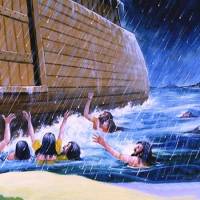
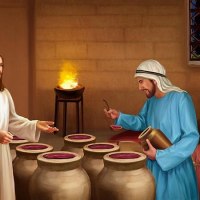
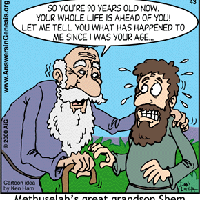
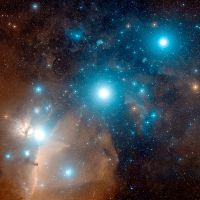
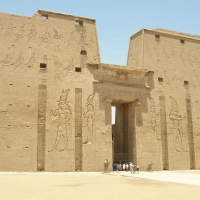



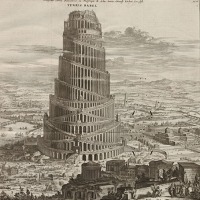
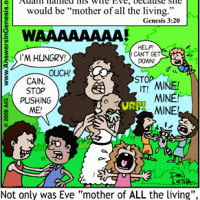















What do you think? Leave a comment. Please pray for the worldwide impact of the Bible-Science Guy ministry!